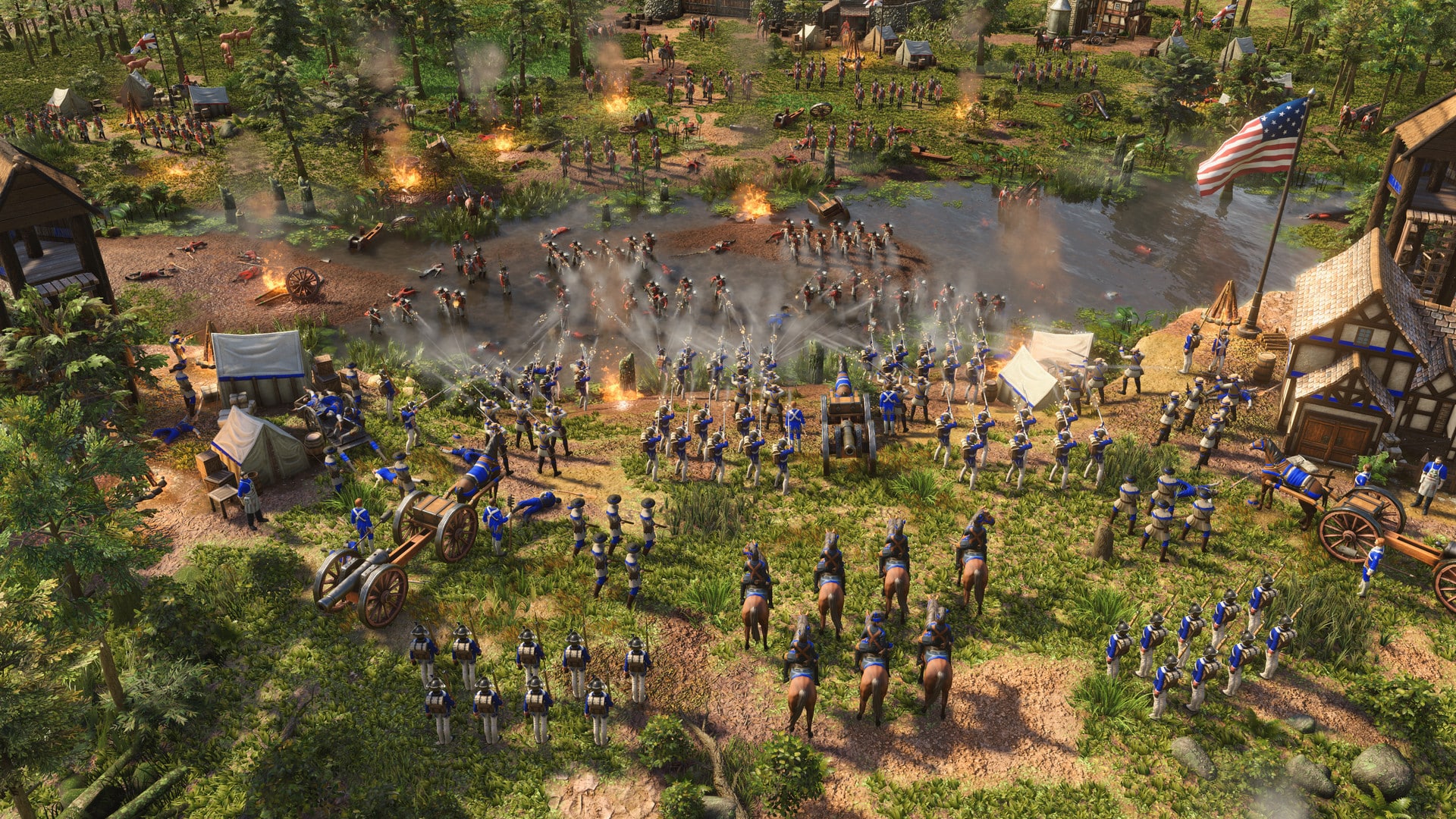I: The Age of Discovery
The dawn of the 16th century marked a new era of exploration and conquest, as European powers began to venture across the seas, driven by their thirst for wealth, knowledge, and power. Among them, the kingdoms of Britannia, Castillia, and Lusitania stood at the forefront, vying for dominance in this age of discovery.
Fueled by tales of mysterious lands and untold riches, daring explorers embarked on perilous journeys, navigating uncharted waters and braving treacherous landscapes in search of fortune and glory. Little did they know that their actions would set the stage for an epic struggle that would span continents and shape the course of history.
II: A World Divided
As the European powers established footholds in the New World, they encountered indigenous civilizations with rich and diverse cultures, each boasting its own unique strengths and weaknesses. The Aztlani, the Irokari, and the Lakotah were among the most formidable of these native peoples, determined to protect their ancestral lands from foreign invaders.
Tensions between the European colonizers and the native inhabitants escalated rapidly, as the newcomers sought to exploit the vast resources of the New World and extend their influence. As alliances were forged and rivalries ignited, a complex web of political intrigue and military conflict began to envelop the New World, setting the stage for a tumultuous struggle for power and control.
III: The Fires of War
As the European powers expanded their colonies and competed for dominance, their ambitions and rivalries spilled over into full-scale conflict. The kingdoms of Britannia, Castillia, and Lusitania waged brutal wars, vying for supremacy in the New World, while the native civilizations struggled to preserve their way of life in the face of mounting foreign aggression.
The fires of war consumed the New World, as armies clashed in epic battles, fueled by the unrelenting desire for conquest and the indomitable spirit of resistance. Each nation sought to outmaneuver and overpower its adversaries, employing a combination of military might, cunning diplomacy, and technological innovation in their quest for victory.
IV: The Turning Tide
As the years wore on, the tide of war began to turn, as the shifting balance of power and the mounting cost of conflict forced the warring factions to reconsider their strategies and priorities. Amid the chaos and carnage, new leaders emerged, rising to prominence through their courage, wisdom, and determination to bring about a better future for their people.
These visionary leaders recognized the need for unity and cooperation, seeking to forge alliances and establish diplomatic relations in order to bring an end to the seemingly endless cycle of war and destruction. Their efforts, however, would be tested by the forces of greed and ambition that still threatened to plunge the New World into chaos.
V: A New Beginning
In the face of overwhelming adversity and hardship, the leaders of the New World nations persevered, striving to establish lasting peace and stability across the continent. Through a combination of diplomacy, negotiation, and sheer force of will, they managed to broker a series of treaties and agreements that brought an end to the long and bloody conflict.
As the fires of war finally subsided, the nations of the New World turned their attention to the challenges of reconstruction and reconciliation. The seeds of a new era had been sown, as the people of the New World looked to the future with renewed hope and optimism, determined to forge a brighter, more prosperous tomorrow for all.
VI: The Struggle for Prosperity
In the aftermath of the wars, the nations of the New World faced a daunting task: rebuilding their shattered lands and societies and forging a new path forward. Despite the newfound peace, the struggle for prosperity was far from over, as each nation sought to secure its place in this rapidly changing world.
The European powers, along with the native civilizations, began to invest heavily in their economies, harnessing the abundant resources of the New World and developing new technologies to gain an edge over their rivals. Trade networks expanded, connecting the continents and creating a global marketplace for goods, ideas, and opportunities.
VII: The Rise of Industry (Word Count: 300)
The dawning of the industrial age brought about a seismic shift in the balance of power, as the New World nations embraced the potential of mechanization and mass production. Factories and workshops sprang up across the land, churning out goods and materials at an unprecedented pace, transforming the face of commerce and industry.
As the engines of progress roared to life, the people of the New World found themselves caught up in a whirlwind of change and innovation, as new inventions and discoveries revolutionized every aspect of their lives. However, with these great strides forward came new challenges and threats, as the quest for progress threatened to overshadow the need for sustainability and balance.
VIII: The Age of Enlightenment
Amid the breakneck pace of industrial and technological advancement, a new generation of thinkers and visionaries emerged, seeking to guide the nations of the New World toward a more enlightened and just future. These philosophers, scientists, and artists championed the ideals of reason, liberty, and progress, inspiring their fellow citizens to question the status quo and strive for a better world.
The Age of Enlightenment saw the birth of new ideas and movements, as the people of the New World embraced the values of democracy, human rights, and social justice. These principles gradually took root across the continent, laying the foundations for a new era of freedom and equality.
IX: The Challenge of Unity
Despite the progress and prosperity of the New World, the specter of conflict and division continued to loom large over the nations, as old rivalries and grievances threatened to undermine the fragile peace. The challenge of unity weighed heavily on the leaders of the New World, as they grappled with the complex web of political, economic, and cultural issues that divided their people.
Through a delicate balancing act of diplomacy and compromise, these visionary leaders sought to bridge the gaps between their nations, fostering a spirit of cooperation and mutual respect that would serve as the bedrock of their shared future.
X: A Legacy of Hope
As the New World entered a new century, the legacy of the Age of Empires continued to shape the course of history, as the nations forged ahead on their journey towards peace, progress, and prosperity. The lessons of the past served as a constant reminder of the importance of unity, cooperation, and understanding in the face of adversity and uncertainty.
Through the trials and tribulations of their turbulent history, the people of the New World had emerged stronger, wiser, and more resilient, with an unshakable determination to build a brighter future for generations to come. In the annals of history, their story would stand as a testament to the indomitable spirit of hope, courage, and perseverance that had carried them through the darkest of times and into a new era of promise and possibility.

